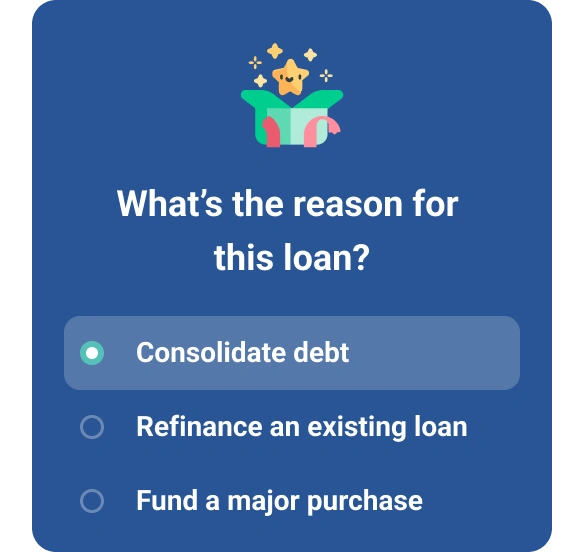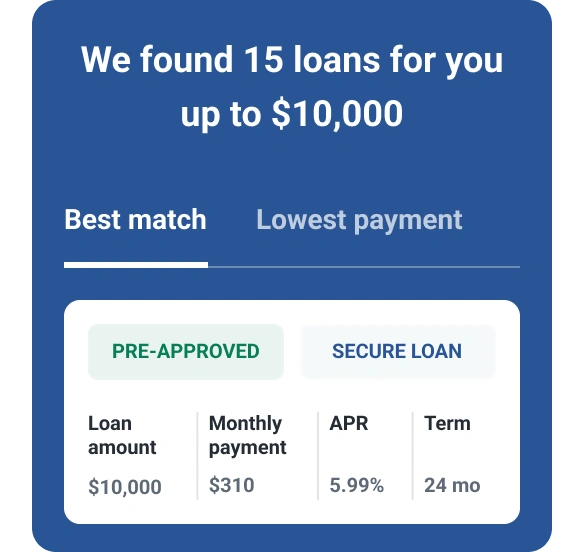How to Choose the Best Loan Term for Your Needs
Quick Answer
You can lower your monthly loan payments by choosing a longer loan term, but it can add substantially to your total loan costs. It’s important to balance the need for low monthly payments with the overall costs of financing over a longer term.

Choosing the right term for your loan can make a big difference in your monthly payment and total cost, as well as the obvious impact on how long you'll be budgeting for payments. And there's more: Longer loan terms can mean higher interest rates, which can mean even greater differences in overall costs.
If you're in the market for a home, auto or personal loan, you'll need to balance what you can afford to pay every month with the total cost of the loan. For more tips on how to choose the best loan term for your needs, read on.
What Is a Loan Term Length?
A loan term is the period of time you'll spend repaying the loan. Loan terms vary depending on the size of the loan and its purpose: A mortgage, for example, typically has a longer term than a car loan. Here are some typical terms for three common types of loans.
- Mortgage terms commonly range from 10 years up to 30 and (less commonly) 40 years.
- Auto loans are typically available with terms of 24, 36, 48, 60, 72 and 84 months.
- Personal loan terms generally range from 12 months to 60 months.
How to Choose the Best Loan Term Length
The best loan term has a monthly payment you can afford while also having the shortest term, lowest annual percentage rate (APR) and lowest overall cost possible. Consider these three factors when shopping for a loan:
- A longer loan term means smaller monthly payments.
- Longer-term loans tend to have higher interest rates.
- Shorter-term loans usually have lower total costs, since you pay interest over fewer months.
Here are two examples of how different loan terms might play out.
Mortgage Payments: 30 Years vs. 15 Years
Payments are lower on a 30-year mortgage than on a 15-year loan, but maybe not by as much as you'd think. Using mortgage rates from April 2023, here's how Experian's mortgage calculator compares payments and costs on 30-year and 15-year mortgages for a $400,000 home purchase with 20% down.
| 15—Year Mortgage | 30—Year Mortgage | |
|---|---|---|
| Loan amount | $320,000 | $320,000 |
| APR | 5.347% | 5.978% |
| Monthly payment | $2,589 | $1,914 |
| Total payments | 180 | 360 |
| Total cost | $465,977 | $689,054 |
A 30-year mortgage saves you $675 a month. On the other hand, you'll need 15 more years to pay it off at an additional cost of $223,077, or 70% of your original $320,000 loan amount.
- At age 30, the lower monthly payment could help you qualify for your first home loan by keeping your debt-to-income ratio (DTI) lower.
- At age 50, a shorter loan term lets you pay off your home free and clear by age 65, if you can afford the larger payments.
Minding the Equity on a Car Loan
On a typical loan, every loan payment you make amortizes your debt: Some of your payment goes toward paying interest and the rest reduces your principal loan balance. Some loans have fixed amortization, with a set amount of principal and interest applied with each payment. Other loans are structured to pay more in interest early in the loan term and more in principal toward the end of the loan. In either case, the longer your loan term, the longer it takes to build equity.
As car prices and interest rates rise, getting a longer loan term can help make monthly payments manageable, but be mindful of your total loan costs and equity. Say you take out a $30,000 car loan at 5.6% interest. With a five-year term, your monthly payment is $574. With a seven-year term, it's $433, or $141 less. But your total payments on a seven-year loan are $1,867 higher. And if you decide you want to sell your car after five years, you'll still owe $9,412 on your seven-year loan.
When to Choose a Shorter-Term Loan
Choose a shorter-term loan when you want to save money on interest and keep your loan repayment short and sweet. A shorter-term loan may be a good choice if you fit these criteria:
- You can afford higher monthly payments.
- You are able to secure a lower interest rate.
- You want to pay your loan off faster.
- You want the lowest total cost.
When to Choose a Longer-Term Loan
Choose a longer-term loan when you need a lower monthly payment. A longer-term loan may be the right choice if you check the following boxes:
- You want the lowest monthly payments.
- You can afford to pay a higher interest rate.
- You are willing to pay your loan off over a longer time.
- You are willing to bear a higher total cost to get a lower payment.
The Bottom Line
There is, of course, one more lever you can use to adjust your loan costs, monthly payment and loan term: the amount you spend. Buying a less expensive home or car, or choosing a smaller personal loan, can reduce your total costs and monthly payment—and shorten your loan term at the same time.
Good credit can also help, since credit scores generally help determine what interest rate you'll pay on a loan. You can check your credit score and credit report for free with Experian, and work on improving your credit if necessary to get the best loan term possible.
Need a loan?
Whether you're shopping for a car or facing a last-minute expense, compare loan offers matched to your credit profile.
Start now for freeAbout the author
Gayle Sato writes about financial services and personal financial wellness, with a special focus on how digital transformation is changing our relationship with money. As a business and health writer for more than two decades, she has covered the shift from traditional money management to a world of instant, invisible payments and on-the-fly mobile security apps.
Read more from Gayle

